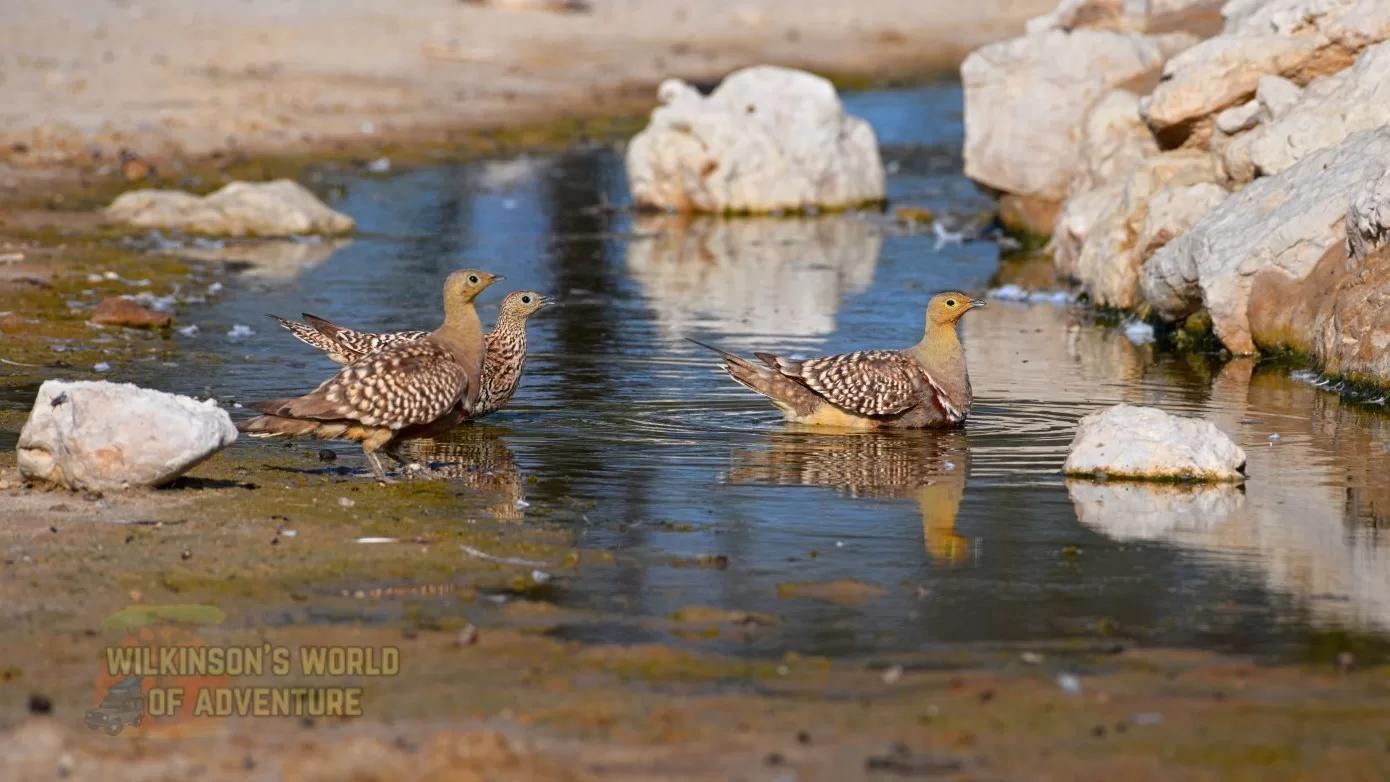Sandgrouse predominantly inhabit dry and arid regions, and we have encountered them often during our trips to Namibia and the Kalahari. It’s not uncommon to see the occasional pair near the roadside, giving the impression that they are not particularly social creatures. However, things change during the breeding season, and they adopt communal or social behaviour to form large flocks, allowing them to access water points together.
Sandgrouse form close bonds when breeding, and males play an important role in providing water for thirsty chicks that are not equipped for long flights. The birds take to the skies in large flocks, and it is fascinating to watch them as they approach the water sources. They circle numerous times to check for danger, usually from predators like fast-flying falcons, or in the case of the Kgalagadi National Park, jackals that also linger around in the hopes of catching something to eat.
Once they land, often for a few seconds at a time if falcons are present, they try to drink copious amounts of water. Then, they perform a water-gathering ritual, drawing water into their specialised, highly absorbent breast feathers. Once the breast feathers are completely saturated, and they have sufficient water ‘on board,’ they return to their nests, which can be as far as 80kms away. The chicks are then able to able to drink water from the moistened feathers.
We have been fortunate enough to film male Namaqua sandgrouse (Pterocles namaqua) gathering water in their breast feathers, and it is interesting to understand now why they are doing this. Nature truly is remarkable in the way the birds and animals are adapted for survival in various harsh environments.




Recent Comments